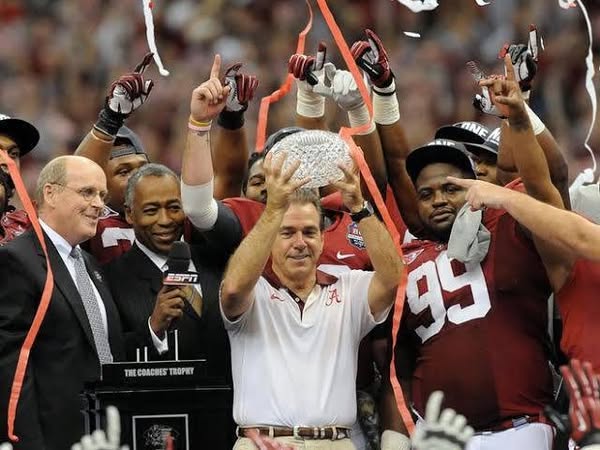Alabama’s Legacy as an SEC Powerhouse: A Winning Culture Built by Legends
The University of Alabama’s football program has cemented itself as one of the most dominant forces in college football history. With a legacy deeply rooted in the Southeastern Conference (SEC), Alabama has set the gold standard for excellence, discipline, and championships. The foundation of this winning culture was laid by legendary coaches such as Paul “Bear” Bryant and Nick Saban, whose leadership and relentless pursuit of success transformed the Crimson Tide into a football dynasty. This article explores the evolution of Alabama’s dominance in the SEC, highlighting key moments, influential figures, and the cultural impact of the program.
Paul “Bear” Bryant: Building the Tradition
Alabama’s ascent to college football greatness began in earnest under the leadership of Paul “Bear” Bryant, who took the reins in 1958. Bryant’s coaching philosophy emphasized discipline, toughness, and preparation, setting the foundation for decades of success. During his 25-year tenure, he led Alabama to six national championships and 13 SEC titles, embedding a culture of winning that still influences the program today.
Bryant’s impact extended beyond the field. He revolutionized the way college football teams trained and prepared, implementing rigorous practice routines and conditioning programs that became a model for others. His famous houndstooth hat became a symbol of Alabama football, and his legacy is immortalized in the minds of Crimson Tide fans. His ability to adapt and evolve with the game ensured Alabama’s continued success, making him one of the most revered figures in college football history.
The Transition Years: Sustaining the Legacy
Following Bryant’s retirement in 1982, Alabama experienced a period of instability. Coaches such as Ray Perkins, Bill Curry, and Gene Stallings led the program with varying degrees of success. Stallings, who had played for Bryant at Texas A&M, brought Alabama back to national prominence in 1992 by winning a national championship. However, the program struggled to maintain consistent dominance in the years that followed.
Despite the ups and downs, Alabama’s commitment to excellence never wavered. The expectation of winning and competing for championships remained intact, setting the stage for the arrival of the coach who would restore the program to unprecedented heights: Nick Saban.
Nick Saban: The Modern Architect of Alabama’s Dynasty
When Nick Saban arrived in Tuscaloosa in 2007, he inherited a program desperate for stability and success. From the outset, he implemented his “Process” philosophy, emphasizing relentless preparation, attention to detail, and a standard of excellence that players and staff were expected to uphold. His approach quickly paid dividends, and in just a few years, Alabama was back at the pinnacle of college football.
Under Saban’s leadership, Alabama has won multiple national championships and SEC titles, further solidifying its place as a powerhouse. His ability to recruit top talent, develop players, and adapt to the ever-changing landscape of college football has kept Alabama ahead of the competition. From dominant defenses to explosive offenses, Saban has consistently evolved his coaching strategies to maintain Alabama’s competitive edge.
Saban’s success has also reshaped the SEC, forcing other programs to elevate their standards. His emphasis on meticulous preparation and player development has set a benchmark for excellence that few programs can match. As a result, Alabama’s dominance under Saban has not only benefited the university but also elevated the prestige of the entire conference.
Key Moments in Alabama’s SEC Dominance
Alabama’s legacy is defined by iconic moments that have shaped the program’s history. Some of the most memorable include:
- The 1961 National Championship: Alabama’s first national title under Bryant, establishing the program as a national powerhouse.
- The 1992 National Championship: Gene Stallings led Alabama to victory over Miami in the Sugar Bowl, reasserting the program’s dominance.
- The 2009 National Championship: Nick Saban’s first title with Alabama, marking the beginning of a new dynasty.
- The “Kick Six” Game (2013): A heartbreaking loss to Auburn, but a testament to the intensity of Alabama’s rivalries and the drama of SEC football.
- The 2017 National Championship: A comeback win against Georgia, featuring Tua Tagovailoa’s legendary game-winning touchdown pass.
Each of these moments contributed to Alabama’s storied history and its reputation as a dominant force in college football.
Cultural Impact and Legacy
Alabama’s football program extends beyond wins and losses—it is a cultural institution. The Crimson Tide’s success has united generations of fans, creating a passionate and devoted fanbase that spans the nation. The tradition of “Roll Tide” resonates in stadiums, homes, and sports bars, symbolizing pride, perseverance, and the pursuit of excellence.
Moreover, Alabama’s impact on the SEC cannot be overstated. The program’s success has elevated the competitiveness of the conference, attracting top talent and securing lucrative media deals. Alabama’s dominance has forced other SEC programs to improve, ultimately making the conference the most formidable in college football.
The Future of Alabama Football
As the college football landscape continues to evolve, Alabama remains at the forefront of change. With new challenges such as NIL (Name, Image, and Likeness) deals, the transfer portal, and playoff expansions, the Crimson Tide must adapt to maintain its edge. However, the foundation laid by Bryant and fortified by Saban ensures that Alabama will continue to be a dominant force for years to come.
Even when the day comes that Saban steps away from coaching, Alabama’s culture of excellence is unlikely to fade. The program’s infrastructure, recruiting prowess, and deep-rooted winning mentality will keep it in contention for championships.



